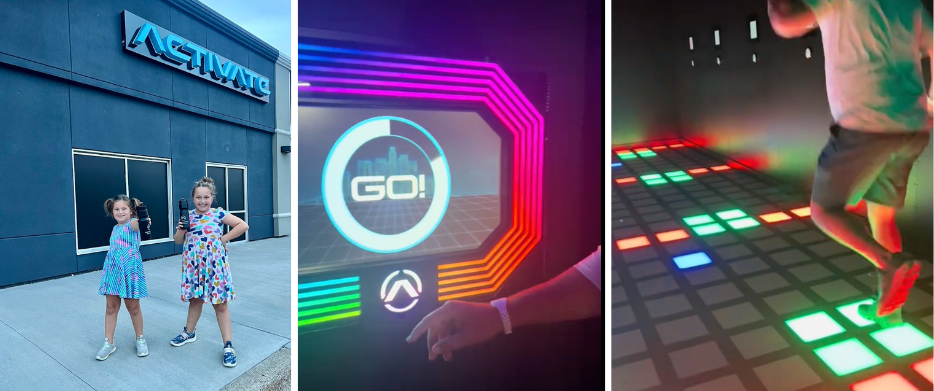I bring tidings of GREAT joy: After many hours of work this weekend, all 361 episodes of “The EdTech Situation Room” podcast are now available on Substack… AND are updating to other podcatcher / podcast listening platforms. (Spotify, YouTube, PocketCasts, Apple Podcasts, etc.) This change was a long time coming, and in this post I’ll […]
I bring tidings of GREAT joy: After many hours of work this weekend, all 361 episodes of “The EdTech Situation Room” podcast are now available on Substack… AND are updating to other podcatcher / podcast listening platforms. (Spotify, YouTube, PocketCasts, Apple Podcasts, etc.) This change was a long time coming, and in this post I’ll share a few highlights of this journey.

I love podcasts and podcasting. I started podcasting with “Moving at the Speed of Creativity” in 2005, and continue to both produce my own regular podcasts as well as help others get started in podcasting.
Jason Neiffer and I have been co-hosting The EdTech Situation Podcast on an almost-weekly basis since 2016, and I’m exceptionally proud of the “body of work” we’ve co-created now with over 360 hour long episodes. We initially started livestreaming with Google Hangouts, but eventually discovered and migrated to Streamyard, which we absolutely LOVE and just keeps getting better and better as a platform.
After Facebook changed it’s live streaming policies (now requiring at least 100 followers) we continued just live streaming on Wednesday nights to YouTube. In addition to the live stream, YouTube auto-archives our shows to our YouTube channel. For well over 250 shows, I followed a relatively complex workflow of post-production podcast steps which included:
- Using the PodLove Publisher plugin for WordPress
- Using HandBrake software (free) to create compressed video versions of each podcast episode
- Using iTunes software to create compressed / 32 kbps audio versions of each podcast episode, with embedded show art and a description
- Uploading both audio and video versions to Amazon S3
- Writing (eventually with some help from AI / ChatGPT) a podcast description for each episode
- Organizing and sharing our “show notes / links” from each episode in a podcast blog post
- Eventually (maybe around episode 250?) cross-posting each episode video to our Substack, along with show notes / links we included in our weekly Google Doc but did NOT have time to discuss during the show
This was a lot of post-production work each week, and over time I fell behind. Until this weekend, I was 10+ episodes behind… Which meant our latest podcast episodes were on YouTube, but were NOT on Spotify, Apple Podcasts, PocketCasts, etc. This has been a dark cloud hanging over my head for many months.
After a little consultation with ChatGPT, I decided to use a much more streamlined and simplified workflow for publishing our EdTech Situation Room podcast:
- Download the 1080P (and highly compressed) video from YouTube Studio following each show.
- Use www.youtube-transcript.io to create an automated / unedited transcript of each episode, downloaded as a PDF.
- Create a Google Doc of organized links (those we discussed and those we did NOT discuss) for each episode, saved as a RTF / rich text file
- Use a custom GPT (“EdTechSR Podcast Post Production“) to brainstorm possible 3 word podcast titles, and draft a podcast description.
- Post the episode video from YouTube along with its meta information (title, description, show notes / links) to Substack.
This is still a multi-step podcast post-production process, but it’s MUCH faster and streamlined than my previous one. I’m so excited! I think it’s now realistic for me to commit to publishing our full episodes (with show notes) within 48 hours, and those updated links and videos should be syndicated / publishing on all our podcast channels / platforms.
This year, in 2025, YouTube became the biggest and most popular platform for podcasts and podcast listeners / watchers. Fortunately, our EdTech Situation Room podcast has been a VIDEO podcast from the start… and we formally / technically made EdTechSR a YouTube podcast a few years ago. (The process is very easy and straightforward.)
I’ve been using Spotify for Creators (previously Anchor.fm) to publish several podcasts in the past decade, including our “Wes and Shelly Share” podcast and “Class with Dr. Fryer.” Substack, however, is IMHO an even faster-growing and more robust / flexible platform… particularly when it comes to user / listener interactivity: Providing comments as feedback, and sharing / re-sharing content.
I also LOVE that Substack allowed me to import ALL past episodes of EdTechSR by simply pasting my old RSS feed… So we now have a complete archive of all our shows on our Substack. 349 episodes of EdTechSR remain archived and available on our WordPress website, but at this point I’m not planning on posting new episodes there.
Only posting your media / content to a third party website involves real risks. I saved some of our family audio recordings when Audioboo went offline, but I think I lost some… And I also lost other audio files to different audio and video platforms over the years. (EduBlogs.tv, cinch.fm, etc.) At this point, however, I’m very confident YouTube will remain online for the foreseeable future… and I’m hoping Substack continues to thrive and grow as a platform.
If you’re a podcaster, has your post-production workflow changed in the past couple of years? I’d love to hear about it.
Hope you’ll join Jason and I on the EdTech Situation Room podcast soon! If you can, please follow our page on Facebook… Once we get 100 followers (we have 59 today) we’ll be able to livestream there again too!














